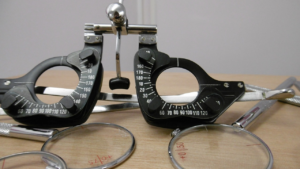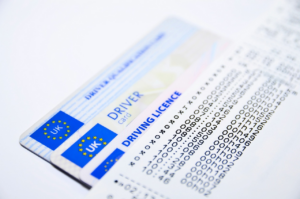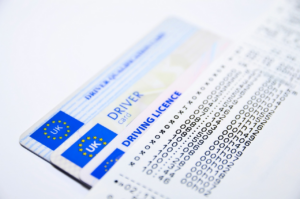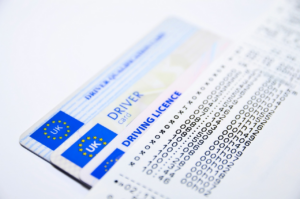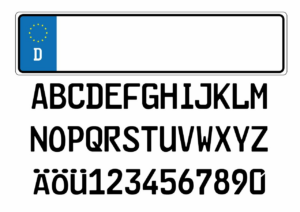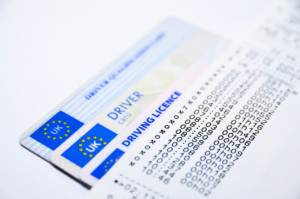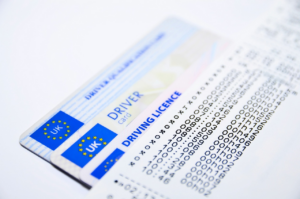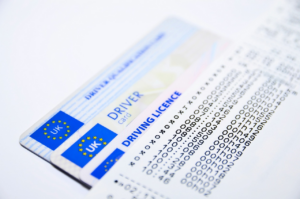Do you dream of hitting the open road with your very own UK driving licence? Before you can start turning the ignition, there are some important things you need to know. The road can be a dangerous place, and the consequences of a mistake behind the wheel can be severe. That’s why driver’s education is so critical for UK driving licence applicants.
Driver’s education isn’t just about passing a test – it’s about developing the skills and knowledge you need to stay safe on the road for years to come. From understanding the rules of the road to developing good driving habits, driver’s education can help you become a confident and competent driver.
In this article, we’ll explore the importance of driver’s education for UK driving licence applicants and the many ways it can help you become a safer and more responsible driver. So buckle up and let’s hit the road!
Legal Requirements for UK Driving Licence Applicants
You gotta know the legal requirements to get behind the wheel in the UK. First off, you need to be at least 17 years old and have a valid provisional driving licence. This can be obtained by filling out an application, providing proof of identity and residency, and paying a fee. You can apply for a provisional licence up to three months before your 17th birthday, but you can’t start driving until you turn 17.
Once you have your provisional licence, you must pass a theory test and a practical driving test to obtain a full UK driving licence. The theory test consists of two parts: a multiple choice section and a hazard perception section. The practical test evaluates your ability to drive safely and competently in various road and traffic conditions.
Passing both tests allows you to legally drive on UK roads, but it’s important to remember that driving is a continuous learning process and ongoing education and practice are essential for safe driving.
The Importance of Safety on the Road
Stay safe on the road by being aware of your surroundings and following traffic rules and regulations. As a driver, it’s crucial to prioritize safety on the road to prevent accidents and injuries.
You can do this by always wearing your seatbelt, obeying speed limits, avoiding distractions such as texting or eating while driving, and keeping a safe distance from other vehicles. Additionally, it’s important to be aware of weather and road conditions, and adjust your driving accordingly.
In addition to following traffic rules, defensive driving can also help prevent accidents. This means anticipating potential hazards and taking proactive measures to avoid them.
For example, you can avoid tailgating by maintaining a safe distance from the car in front of you, and always checking your blind spots before changing lanes. By being a defensive driver and prioritizing safety on the road, you can reduce the risk of accidents and protect yourself and others on the road.
Developing Good Driving Habits
It’s time to start developing good driving habits that will keep you safe and confident on the road. As a new driver, it’s important to understand that driving is not just a skill, but a responsibility. You must be aware of your surroundings and anticipate potential hazards at all times.
Here are some tips to help you develop good driving habits:
-
Always wear your seatbelt and ensure that your passengers do the same.
-
Adjust your seat and mirrors before you start driving to make sure you have a clear view of the road.
-
Follow the speed limit and keep a safe distance from other vehicles.
-
Avoid distractions such as using your phone, eating, or applying makeup while driving.
-
Practice defensive driving techniques to avoid accidents.
-
Always signal before turning or changing lanes.
-
Keep your vehicle maintained and check your brakes, tires, and headlights regularly.
By following these tips and consistently practicing good driving habits, you can ensure that you are a safe and responsible driver. Remember, driving is a privilege that comes with great responsibility, and it’s up to you to make sure that you are doing your part to keep yourself and others safe on the road.
Building Confidence and Competence
To build confidence and competence as a driver, it’s important to remember the benefits it brings not only to yourself but to other road users as well.
When you feel confident behind the wheel, you’re less likely to make mistakes and more likely to follow the rules of the road.
This not only keeps you safe but also contributes to a safer and more efficient driving environment for everyone.
Benefits for the Driver
As you take driver’s education courses, you’ll gain valuable skills and knowledge that will help you become a safer, more confident driver on the road. These skills and knowledge will not only help you pass your driving test and obtain your UK driving licence, but will also benefit you in various ways as you begin to drive on your own.
Firstly, taking driver’s education courses will help you understand the rules of the road, traffic signs, and signals. This means that you’ll be able to make informed decisions while driving and avoid accidents or costly tickets.
Secondly, you’ll learn defensive driving skills, including how to anticipate and react to potential hazards on the road. This knowledge will help you feel more comfortable and confident while driving, especially in challenging situations such as heavy traffic or adverse weather conditions.
Overall, taking driver’s education courses is an investment in your safety and the safety of others on the road, as well as an investment in your future as a responsible and competent driver.
Benefits for Other Road Users
Learning proper driving techniques not only benefits you as a learner, but it also increases the safety and well-being of all other road users. As a driver, it’s your responsibility to make sure that you’re not only following the rules of the road but also being aware of the other drivers around you.
By taking a driver’s education course, you’ll learn how to properly navigate through different traffic situations, how to avoid accidents, and how to react to unexpected situations. Furthermore, obtaining a UK driving licence requires passing a practical driving test, which tests your ability to drive safely and efficiently on the road.
By having a proper driver’s education, you’ll be more prepared and confident to take this test, ensuring that you’re not only meeting the standards of the test but also the standards of the road. By being a responsible driver, you’re not only protecting yourself but also the other road users who share the road with you.
Understanding the Consequences of Reckless Driving
You can’t afford to take risks on the road, and reckless driving can have serious consequences that could impact your life for years to come.
When you’re behind the wheel, it’s important to understand that your actions have consequences not just for yourself, but for everyone else on the road. Reckless driving can lead to accidents, injuries, and even fatalities. It’s not just a matter of being a responsible driver – it’s a matter of protecting yourself and those around you.
One of the biggest consequences of reckless driving is the potential for legal trouble. If you’re caught driving recklessly, you could face fines, points on your licence, and even a driving ban.
These consequences can have a serious impact on your life, making it harder to get to work, run errands, and enjoy your free time. Not only that, but a driving ban could also impact your career prospects. Employers often require a clean driving record, so if you lose your licence, you could be limiting your career options.
Ultimately, the best way to avoid these consequences is to take driver’s education seriously and learn how to be a safe, responsible driver.
Practical Driving Experience
Now that you understand the consequences of reckless driving, it’s time to focus on gaining practical driving experience. One of the best ways to do this is by enrolling in a driver’s education program.
While you may be eager to hit the road and start practicing, it’s important to have a solid foundation of knowledge and skills before you take your driving test. Driver’s education programs offer a structured approach to learning how to drive.
You’ll receive classroom instruction on topics such as road rules, traffic signs, and defensive driving techniques. You’ll also have the opportunity to practice driving in a safe, controlled environment under the guidance of a trained instructor.
By the time you complete the program, you’ll have the skills and confidence needed to pass your driving test and become a safe, responsible driver on the road. Don’t underestimate the importance of driver’s education – it could be the key to your success as a new driver.
Passing the Driving Test
When it comes to passing the driving test in the UK, there are three key components you need to master: the Theory Test, the Practical Driving Test, and the Hazard Perception Test.
The Theory Test will test your knowledge of the rules of the road and traffic signs, while the Practical Driving Test assesses your ability to apply that knowledge on the road.
The Hazard Perception Test is designed to test your ability to identify and respond to potential hazards while driving.
Adjust the paragraph structure in the Input to logically group complete sentences on their own lines, with a double new line after. Use contractions.
Theory Test
The Theory Test is where you’ll be tested on your knowledge of the rules of the road. It consists of two parts: multiple choice questions and a hazard perception test.
The multiple choice section will test your knowledge of traffic signs, rules of the road, and other driving-related topics. The hazard perception test will assess your ability to identify potential hazards on the road and react accordingly.
Preparing for the Theory Test is essential to passing your driving test and obtaining your UK driving licence. You can study for the test using official DVSA learning materials, which include books, apps, and online resources.
It’s important to take your time when studying and to practice as much as possible. The more you practice, the more confident you’ll feel on test day.
By passing the Theory Test, you’ll be one step closer to achieving your goal of becoming a licensed driver in the UK.
Practical Driving Test
Get ready to put your driving skills to the test with the Practical Driving Test. This test is the final step towards obtaining your UK driving licence, and it’s crucial that you take it seriously.
During the test, an examiner will assess your ability to drive safely and confidently in various traffic situations. You’ll need to demonstrate your knowledge of road rules, as well as your ability to perform basic driving maneuvers such as parking and reversing.
To prepare for the Practical Driving Test, it’s important that you spend plenty of time practicing your driving skills. You should also familiarize yourself with the test format and the areas that you’ll be tested on.
During the test, you’ll need to remain calm and focused, and remember to follow all road rules and instructions from your examiner.
Passing the Practical Driving Test is a major accomplishment, and it’s a sign that you’re ready to be a safe and responsible driver on UK roads. So, get practicing and good luck on your test!
Hazard Perception Test
Now that you’ve passed your practical driving test, it’s time to prepare for the next step in obtaining your UK driving licence – the Hazard Perception Test. This test assesses your ability to identify potential hazards while driving on the road, which is crucial for your safety and the safety of others on the road.
During the Hazard Perception Test, you’ll watch a series of video clips that depict various driving scenarios. Your task is to identify potential hazards, such as pedestrians crossing the road or cars merging into your lane, by clicking the mouse when you see them. This test is designed to measure your reaction time and ability to anticipate potential dangers on the road.
It’s essential to prepare for this test to ensure that you pass it on your first attempt. Here are two nested bullet point lists to evoke emotion in you, the audience:
-
Reasons to take the Hazard Perception Test seriously:
-
Avoid putting yourself and others at risk of accidents.
-
Increase your chances of passing the test and obtaining your driving licence.
-
Consequences of failing the Hazard Perception Test:
-
Delay in obtaining your driving licence.
-
Additional expenses for re-taking the test.
Don’t take the Hazard Perception Test lightly, as it’s just as important as the practical driving test. The test is designed to ensure that you’re a safe driver on the road and can anticipate potential hazards. By preparing adequately for this test, you’ll increase your chances of passing it on your first attempt and obtaining your driving licence without delays or additional expenses.
Continuing Education and Improvement
Improving your skills and knowledge on the road is crucial for becoming a safer and more confident driver. Continuing education and improvement should not stop after passing your driving test.
Taking additional courses or attending workshops can help you learn new techniques, refresh your memory on road rules, and stay up to date with changes in driving regulations. One way to continue your education is by taking an advanced driving course. These courses are designed to improve your driving skills and teach you how to handle different road conditions and situations.
You can also attend workshops that focus on specific topics such as defensive driving, eco-driving, or handling a vehicle in adverse weather conditions. By continuing your education, you can become a more skilled driver and ultimately reduce the risk of accidents on the road.
Frequently Asked Questions
What are the age restrictions for obtaining a UK driving licence?
To obtain a UK driving licence, there are various age restrictions that must be met. If you’re wanting to drive a car, you must be at least 17 years old and meet the minimum eyesight requirements.
If you want to drive a motorcycle, you must be at least 16 years old and have completed a Compulsory Basic Training course.
If you’re wanting to drive a larger vehicle such as a bus or lorry, you must be at least 18 years old and have the appropriate category on your licence.
It’s important to note that these age restrictions are in place to ensure the safety of both the driver and other road users.
How many driving lessons are recommended before taking the driving test?
Before taking your driving test in the UK, it’s recommended that you take around 45 hours of professional driving lessons. Of course, this can vary depending on your individual needs and learning style, but it’s generally best to get as much practice as possible behind the wheel before taking the test.
During your lessons, you’ll learn everything from basic car control to more advanced maneuvers like parallel parking and emergency stops. Additionally, your instructor will help you develop good driving habits and teach you how to navigate different road conditions and traffic situations.
By taking the time to learn proper driving techniques and practice your skills, you’ll be better prepared to pass your driving test and stay safe on the road.
Is it necessary to take a theory test before taking the practical driving test?
If you’re planning to take the practical driving test in the UK, you’ll need to pass the theory test first.
The theory test is a computer-based exam that assesses your knowledge of the rules of the road, hazard perception, and other key driving topics.
It’s important to prepare thoroughly for the theory test, as passing it is a requirement for obtaining a full UK driving licence.
You can find study materials and practice tests online, and many driving schools offer theory test preparation courses.
Taking the time to study and prepare for the theory test will increase your chances of passing it on your first attempt and getting one step closer to becoming a licensed driver.
Can a person with a foreign driving licence drive legally in the UK?
If you have a foreign driving licence, you’re allowed to drive legally in the UK for up to 12 months from the date of your arrival.
However, after this period, you’ll need to apply for a UK driving licence in order to continue driving legally. The process of obtaining a UK driving licence can be complex and may require you to take both the theory and practical driving tests.
It’s important to note that driving laws in the UK may be different from those in your home country, so it’s recommended that you take some time to familiarize yourself with them before driving on UK roads. It may also be beneficial to consider taking driver’s education courses to ensure that you’re fully prepared for the UK driving experience.
What kind of penalties can a driver face for breaking traffic laws?
If you break traffic laws while driving in the UK, you may face a range of penalties depending on the severity of the offense.
Minor offenses like speeding or using a mobile phone while driving can result in a fine and penalty points on your license.
More serious offenses, such as driving under the influence of drugs or alcohol, can lead to a license suspension or even a prison sentence.
It’s important to remember that even a minor offense can add up over time and result in a license suspension or revocation.
As a driver, it’s your responsibility to be aware of traffic laws and follow them to ensure your safety and the safety of others on the road.
Conclusion
Congratulations! You’ve completed your driver’s education and you’re now ready to hit the road with your UK driving licence. Remember that driving is a privilege and it comes with great responsibility.
It’s essential to prioritize safety on the road by developing good driving habits, building confidence and competence, and understanding the consequences of reckless driving.
By completing a driver’s education course, you’ve gained valuable knowledge and practical experience to help you navigate the roads safely. However, your education doesn’t stop here.
As a driver, it’s important to continue learning and improving your skills. This can include taking advanced courses, staying up to date on traffic laws and regulations, and practicing defensive driving techniques.
With a combination of proper education, good habits, and ongoing practice, you can become a safe and responsible driver for life. Remember to always prioritize safety and respect other drivers on the road.
Congratulations again on earning your UK driving licence, and happy driving!















